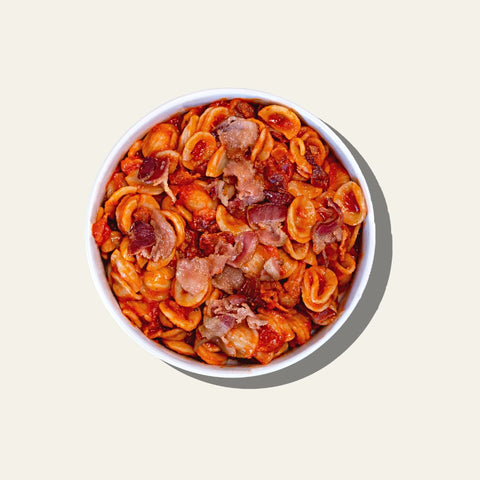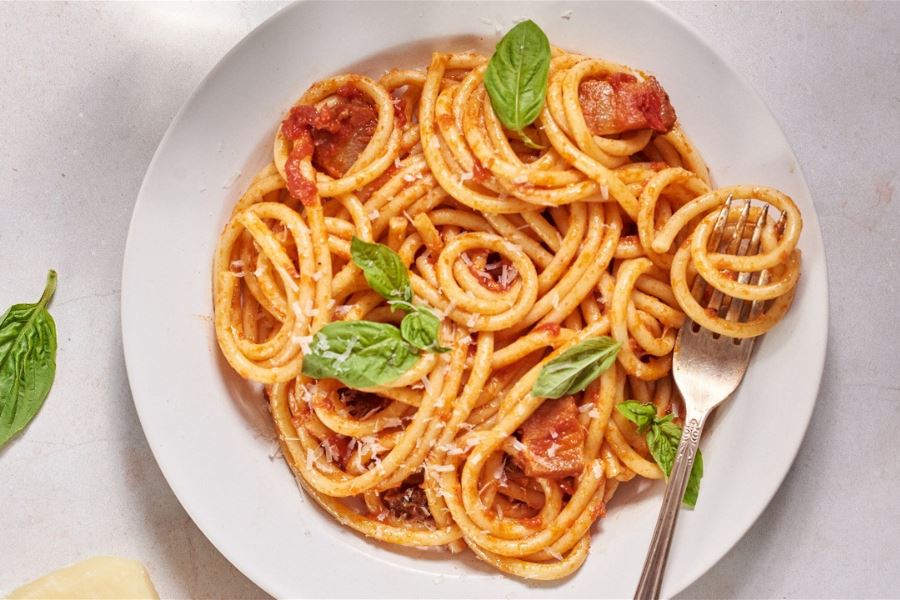With regards to Italian cooking, the decision among Arrabiata and Amatriciana sauces can be a heavenly issue. Both are rich, delightful, and dearest by their own doing. In this far-reaching guide, we’ll investigate the critical difference between Arrabiata and Amatriciana, including their origin, history, fixings, flavor, best matching, and cooking methods. These two exemplary pasta sauces will assist you with raising your culinary ability. You will find recipes for these sauces in restaurants like Burrata House.
What are the Unmistakable Differences Between Arrabiata and Amatriciana?
What are Their Beginning and History?
Arrabiata Sauce
Starting in the core of Italy, Arrabiata sauce hails from Rome. Its name, which signifies “angry” in Italian, impeccably epitomizes its red-hot nature. This sauce is generally made with ready tomatoes, garlic, red stew chips, and olive oil. It sneaks up all of a sudden with its fiery kick, causing it to be #1 among the people who have little intensity in their dishes that you can order from an Italian restaurant in Los Angeles.

Amatriciana Sauce
Then again, Amatriciana sauce follows its underlying foundations back to the town of Amatrice in the Lazio district. It’s a demonstration of the straightforwardness of Italian cooking, highlighting simply a small bunch of fixings: tomatoes, guanciale (relieved pork cheek), Pecorino Romano cheddar, and dark pepper. The outcome is an agreeable mix of exquisite, intense, and marginally zesty flavors that help to create authentic Italian food.
Breaking Down the Ingredients Used at an Italian Restaurant in Los Angeles
Arrabiata Sauce
- Ready tomatoes
- Garlic cloves
- Red bean stew chips
- Olive oil
- Salt
Amatriciana Sauce
- Tomatoes
- Guanciale (relieved pork cheek)
- Pecorino Romano cheddar
- Dark pepper
What is the Flavor of These Pasta Sauces?
Arrabiata sauce enchants the sense of taste with a striking, fiery flavor interspersed by the intensity of the red bean stew chips—an ideal decision for those who relish a fiery kick in their pasta dishes. The garlic adds a hot note, offsetting the tartness of the tomatoes. This is a specialty at different restaurants.On the other hand, Amatriciana sauce offers a more nuanced experience. The abundance of the guanciale injects the sauce with an unmistakable umami quality, supplemented by the sharpness of Pecorino Romano cheddar. The outcome is a flavorful, marginally aromatic profile with a sprinkle of fieriness. You can order Italian food that has these sauces from our restaurant, Burrata House.
Best Pairings of These Sauces
Arrabiata Sauce
- Penne pasta
- Rigatoni
- Spaghetti
Amatriciana Sauce
- Bucatini pasta
- Fettuccine
- Pappardelle
What Can be the Cooking Procedures?
Arrabiata Sauce
To accomplish the ideal Arrabiata sauce, begin by sautéing minced garlic in olive oil until brilliant brown. Add squashed tomatoes and red bean stew pieces, permitting the flavors to merge over low intensity. Stew until the sauce arrives at your ideal degree of hotness. This is the method used by the best Italian restaurants in Los Angeles.
Amatriciana Sauce
Start by crisping up daintily cut guanciale in a skillet. Once brilliant and somewhat firm, including the tomatoes and dark pepper. Allow the sauce to stew until it thickens however you would prefer, and throw it with cooked pasta, making it the best Italian food in Los Angeles.In the awesome universe of Italian food, finding the difference between Arrabiata and Amatriciana sauces eventually descends as you would prefer inclinations. Whether you pine for the searing kick of Arrabiata or the exquisite wealth of Amatriciana, both deal with a culinary excursion through the kinds of Italy. Investigation, appreciation, and, in particular, partake in each luscious chomp. You can visit our website to learn which dishes these sauces are used for.
Frequently Asked Questions
Can I change the hotness of the Arrabiata sauce?
You have full command over the heat . You can change the quantity of red stew chips to suit your taste inclinations. Add something else for an additional kick or decrease for a milder character.
Which wine coordinates best with Arrabiata sauce?
A medium-bodied red wine, for example, a Chianti or Sangiovese, supplements the zestiest of Arrabiata sauce perfectly. Its vigorous flavors blend with the fiery kick of the sauce.
Should I freeze the two sauces for some time in the future?
Both Arrabiata and Amatriciana sauces freeze well. Essentially, store them in impenetrable holders, and they’ll keep up with their flavors for as long as 90 days, making for advantageous and tasty future dinners. But you should know the difference between Arrabiata and Amatriciana

